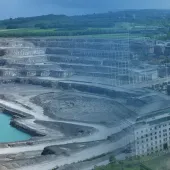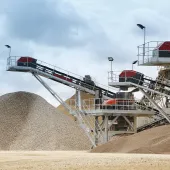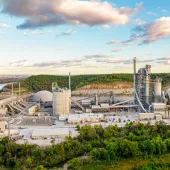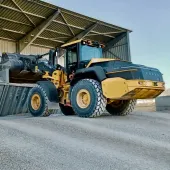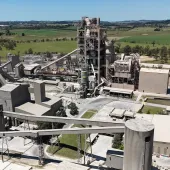Quarry rock dust can make big contribution to carbon capture
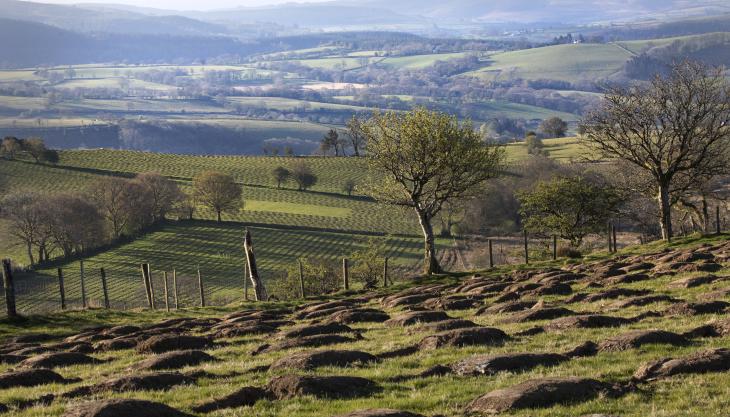
Mineral Products Association Wales webinar hears live from carbon sequestration test site
BROADCASTING live from a newly planted forest in the Brecon Beacons, Charles Nicholls of charity The Carbon Community described how quarry waste can make a significant contribution in recovering carbon dioxide (CO2) from the air when used in conjunction with new woodland creation.
He told a webinar organized by Mineral Products Association Wales that, as part of a new forest of 100,000 trees near Llandovery, Carmarthenshire, a 28-acre test site has been established to research accelerating carbon sequestration. One of the tests being evaluated is treating the ground with crushed basalt. Research has shown that crushed basalt can absorb between 8–12 tonnes of CO2 from the atmosphere for each hectare treated.
Mr Nicholls said: ‘Rock weathering is one of the primary nature-based solutions that can be used to recover carbon emissions at scale; sucking 8–12 tonnes of CO2 per hectare from the air is really significant. Best of all, we’re accelerating a completely natural process. Our test at Glandwr Forest is a world first where we are combining multiple nature-based solutions. We are excited about the potential.’
Glandwr Forest is a new forest of approximately 100,000 trees, with 25,000 of them within the test site. The basalt dust for the project was supplied from Hanson Aggregates’ Builth Wells Quarry, in Powys. The aim of the webinar was to describe how the mineral products sector in Wales could support the transition to net zero.
Mr Nicholls added that given the basalt was produced as a by-product of making aggregate for asphalt and concrete, the projected CO2 recovered from the air far exceeds the emissions from both transport and tree planting. This potentially represents a new way to make forest creation entirely carbon negative.
The Welsh Government’s deputy director of climate change and fuel poverty, Christine Wheeler, set the scene by reminding the audience that whilst Wales had seen a 31% reduction in a variety of greenhouse gases by 2019, the challenge of hitting a 63% reduction in emissions by 2030 was a very steep slope to climb, and Wales had to accelerate the transition process.
Ms Wheeler said: ‘We’ve already seen forest fires and excessive flooding in the industrial areas of South Wales in 2020. If we carry on as we are, by 2080 we can expect sea levels to rise by 42cm in South Wales; we can expect more days of temperatures over 40 degrees; and we can expect wetter winters with storms producing large volumes of rain.’
Almost half the emissions in Wales are produced by business, industry and energy production, and Dr Diana Casey, the Mineral Products Association’s director of energy and climate change, gave an industry perspective, outlining how the cement and concrete industry could go beyond net zero by 2050.
She stated that cement and concrete represented only 1.5% of UK greenhouse gas emissions and the industry was undertaking several initiatives to work towards the 2050 target. These included switching away from the use of fossil fuels to burning waste and demonstrating the use of hydrogen in the cement-making process.
Dr Casey said: ‘Our biggest challenge is to move away from fossil fuels, achieve zero-carbon combustion, and capture carbon dioxide from the cement-making process, but it is important that governments and industry work together.’
She also emphasized the importance of thermal mass in concrete buildings which captured and stored carbon dioxide through a process called carbonation.
‘The thermal mass of concrete in buildings reduces the need for air-conditioning and heating,’ she explained. ‘Buildings must be designed to maximize this feature, which can reduce sector emissions by a further 44% beyond net zero compared with 2018.’
The webinar, which was arranged by the Mineral Products Association Wales and facilitated by MPA Wales chairman Simon Grey of Tarmac, attracted a diverse audience of more than 120 delegates.



